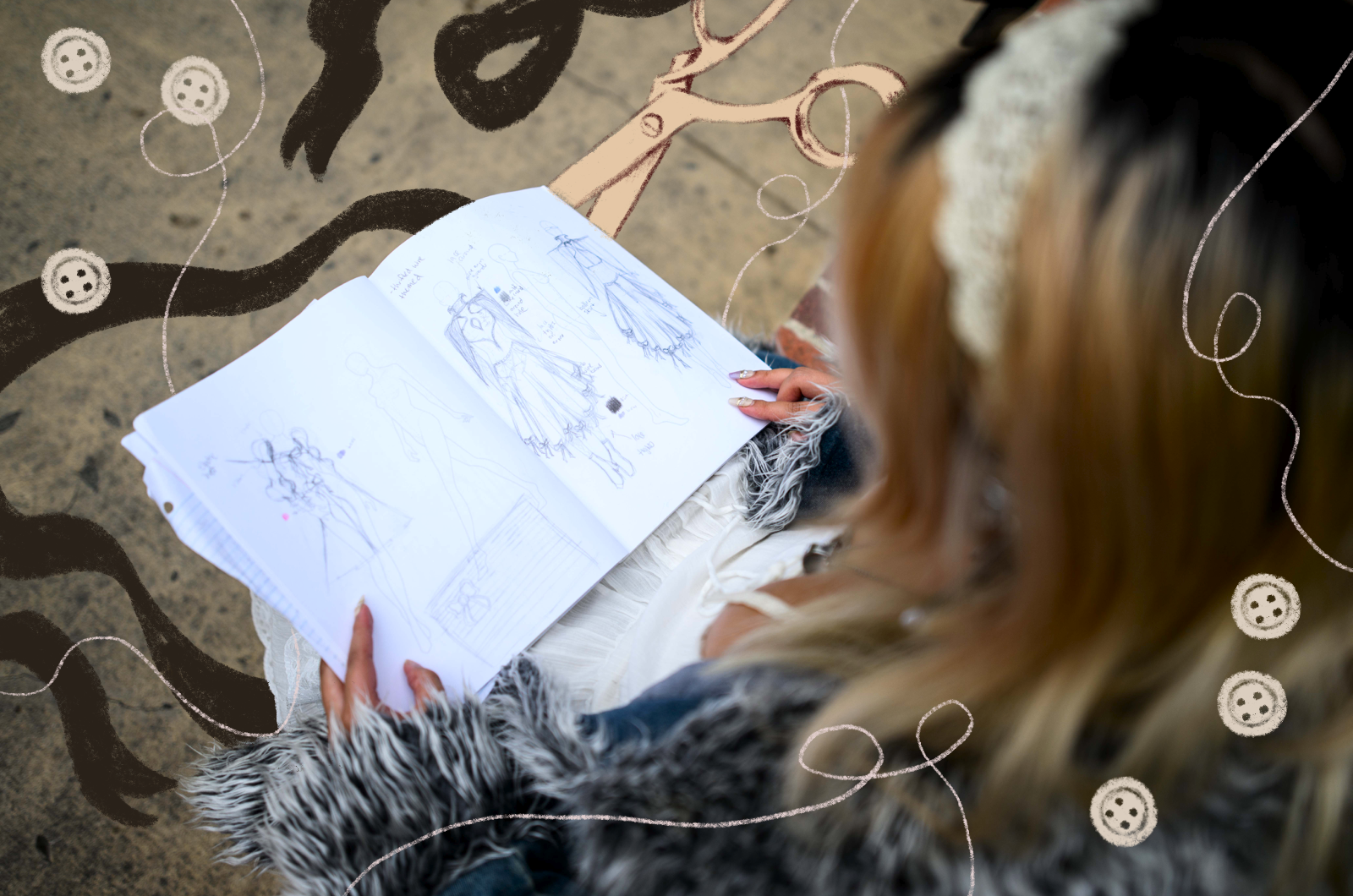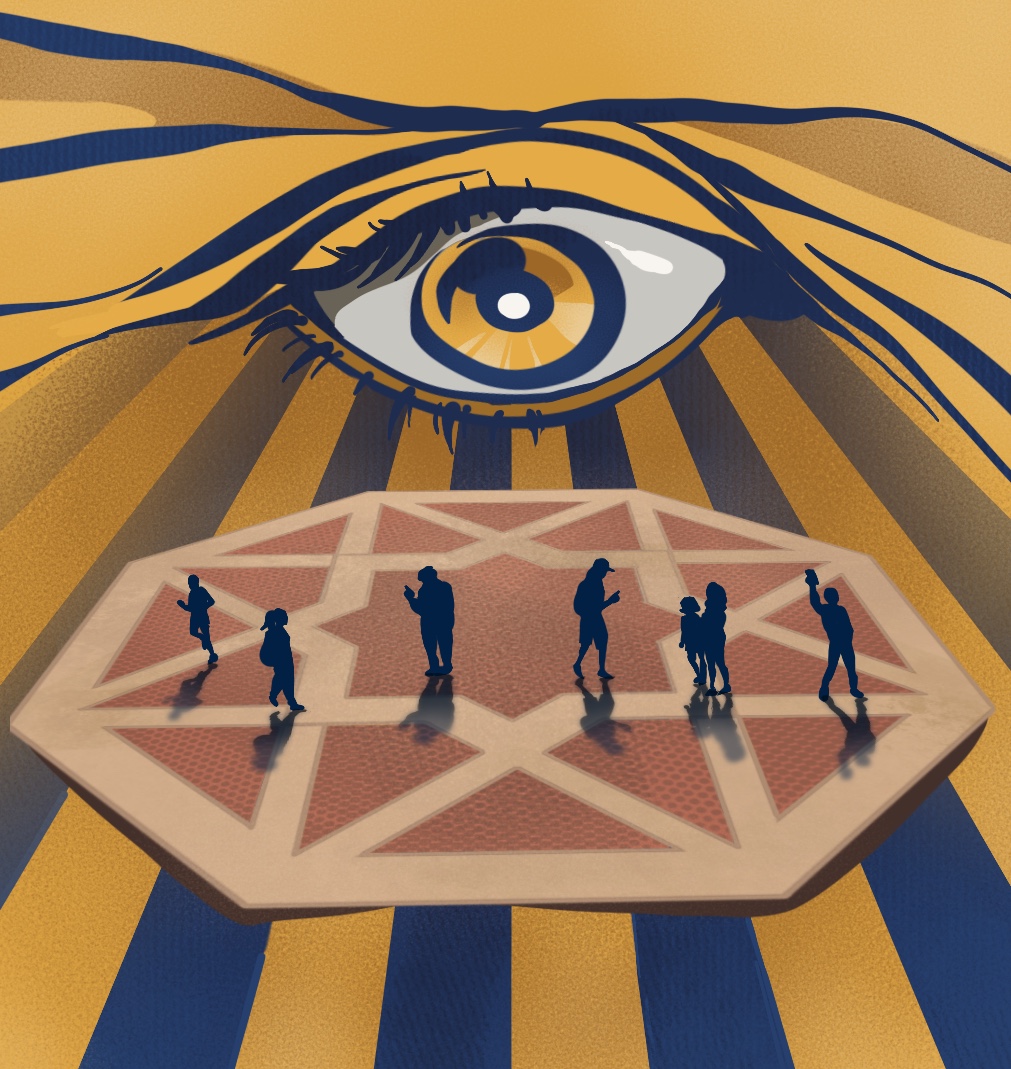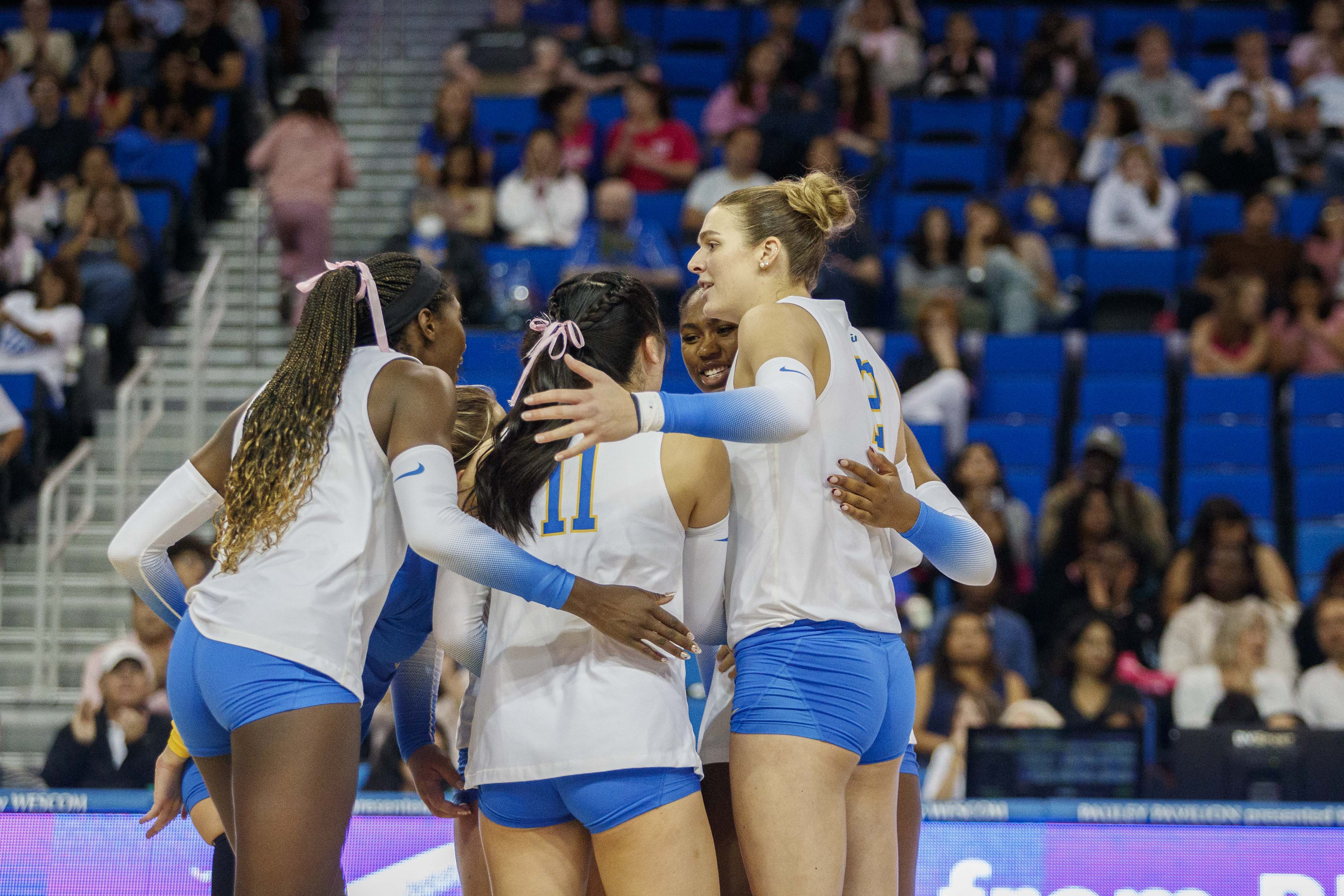Opinion: Can professionalism be pink? The coquette trend and feminine expression

(Ashley Ko/Illustrations director)
By Ria Sanghera
April 5, 2024 12:03 p.m.
This post was updated April 5 at 12:37 p.m.
Pink ribbons have curled, twirled and entwined themselves across the entire UCLA campus. Whether at the end of pigtails, on backpacks or printed on phone cases and T-shirts, it seems there is not a single student who has not seen or worn a pink bow.
Women are reaching for bows as new outfit staples in response to the trending coquette aesthetic, which draws inspiration from Lana Del Rey and nostalgic childhood items such as dollhouses. Popular brands, namely Miu Miu, Simone Rocha and Sandy Liang, have capitalized off the TikTok craze and increased the incorporation of feminine bows into their designs.
However, beyond the bow obsession, it is critical to evaluate how this trend plays a role in modern-day gender expression and contributes both positively and negatively to creating a feminist future.
The coquette trend is rooted in TV shows such as “Bridgerton,” which is heavily correlated with femininity and bows, said Claire Saul, the writing director for Forward, the fashion and arts magazine at UCLA. Many took to social media to recreate these aesthetics, which brought the bow back to popularity.
“In 2014, we had ‘It girls’ like Bethany Mota, the YouTuber, or Ariana Grande and her 1950s aesthetic, always having bows around. So it gives us a sense of nostalgia thinking back to the originality of bows from that era of time.” Saul added. “Nowadays, it’s been reclaimed into a more sophisticated aesthetic.”
Perhaps one of the largest champions of the bow was Dance Moms star JoJo Siwa, who created her own retail line of bows in 2016. However, today’s fashion world sneers at the past bedazzled, comically large, hot pink bows and will only accept the current slender, sophisticated ribbons.
“I used to wear these bows when I was in elementary school, kindergarten to third grade, because that was the dress code in school,” said Natasha Tabbush, a second-year business economics student. “I feel like now it’s totally been repurposed and styled in any way that suits you, … like a cute, grown-up version.”
Bows are commonly used to pay homage to youth in the media, including pop band Japanese Breakfast, Saul said. The lead singer, Michelle Zauner, dresses to represent her younger self, incorporating schoolgirl-like ribbons and poofy-sleeved dresses in her looks.
“It shows me that they (women who wear bows) are a little bit more in touch with their feminine side. They are not afraid to express themselves and not scared of judgment,” Tabbush said. “They’re not afraid to participate in trends because sometimes people look down upon that or be like other girls.”
Bows can empower women and provide a community that promotes the unapologetic expression of femininity.
Juliet Williams, a gender studies professor and chair of the UCLA Social Science Interdepartmental Program, said past notions that women can only succeed in a man’s world by assimilating to male characteristics is now being labeled as false feminism.
This is perhaps a motive for the new trending feminine fashion.
“The real liberation for women comes when we can be as feminine as we want to and we’re not treated as less than because of that,” Williams added.
The idea of the bow is that women can embrace their feminine side as much as they want and still earn the same opportunities and respect.
Female idols in popular culture, exemplified by the 2023 girlboss Barbie and classic head-to-toe pink Elle Woods with her fluffy pen at Harvard Law, challenge viewers to consider women as appearing stereotypically feminine while achieving their career goals. However, this is not always possible in the real or professional world.
“This produces for women a double bind where professionally, it remains the case that what it means to be a competent, successful professional requires divergence from traditional stereotypical femininity,” Williams said. “Sandra Bem made the argument that the most psychologically well-adjusted and successful people in society are those who are actually psychologically androgynous.”
While gender expression is important, hyperfemininity may lead to an altered, undesirable perception of an individual, especially in the workplace, where ribbons can be associated with incompetence and lack of professionalism. Instead of being neutral, the bow brands one as the epitome of womanhood which can then relegate one to a subordinate category.
“Playing up hyperfemininity in those settings … treats gender as a style or preference or fashion rather than a structure that’s producing inequality,” Williams said.
At the end of the day, ribbons can be easily tied on and off, but gender and its associated prejudices cannot.
“We don’t live in a world in which hyperfemininity goes unpunished,” Williams added.
Essentially, there’s a double-edged sword embedded in the simple ribbon bow. While embracing femininity should be encouraged, one cannot ignore the negative stigmas and barriers women still face. Wearing a bow distinguishes someone as a woman or feminine-identifying individual, which may subject them to additional scrutiny and discrimination.
Though, arguably, this is always being done. Renowned philosopher Judith Butler claimed that gender is itself a performance embodied generationally. We constantly perform gender every day in every action. Thus, if we are inherently performing gender and dividing ourselves into categories, would the addition of a bow really create change in the way we are perceived?
But trends of hyperfemininity such as the bow actively reinforce the binary and shift public perception to associate these symbols with what it means to be a woman.
Further, there are benefits to placing oneself in this category and fulfilling traditional norms for how women should appear. It seems that while hyperfemininity plays into the argument of being feminine without stigma, it also allows the women to not lose normative privileges of being a cisgender woman in a time when there is hostility against feminists, Williams said.
The bow reinforces past notions of women as doll-like, tied-up and satisfying the male gaze with hyperfemininity. Therefore, “unfeminine” women may be ousted for not adhering to traditional norms. This reverses core notions of feminism that women can express themselves however they please, whether in bows or buzzcuts.
Tabbush said wearing bows makes her feel less intimidating and more approachable and may alter how someone perceives a girl.
“The shift in the paradigm is interesting, as it portrays the evolution of society. While it’s become more liberated from the restrictions of gender, we also have magnified the stereotypes and boxed them into these niche aesthetics where we now connote ribbons with hyperfemininity,” Saul said.
The divide this trend creates alienates those who don’t participate or embrace traditional femininity. By reinforcing traditional stereotypes, it potentially hinders alternative definitions for how a woman is supposed to look and behave. This continues to polarize the rigid distinction between men and women, leaving no room for middle ground or for gender operating as a spectrum.
Nevertheless, the bow can be used purposefully to convey unique messages of gender expression. A friend of mine has a bow in her laptop cover, helping to represent herself in engineering labs and clubs she feels are masculine-dominated. Women seeing one another embrace femininity can replace shame with celebration of womanhood.
“I think it’s good that as a whole, girls have become more in touch with their feminine side because of this trend and not scared to express themselves and be seen as feminine,” Tabbush said. “It’s empowering in a cute, pretty way.”
The sentiment is strong that a simple, visually appealing accessory enables women to feel comfortable within their identities and gender expression. Especially since society may not be as accepting of bedazzled camouflage in the army, pink pantsuits in an office or frilly lab coats in a laboratory. That being said, the bow can hold power in a patriarchal, male-dominated society.
“I like the gesture of marking one’s alterity in places where that’s disruptive,” Williams said. “But I question whether a bow is really the way we want to symbolize what it means to be a woman.”
Although the bow began as a TikTok trend, it raises a broader question of whether embracing hyperfemininity in a society in which gender equality has not been achieved reinforces traditional gender roles and assumes that the goals of the feminist movement have already been accomplished.
Perhaps collective expression in fashion can create change in our world. But the bow needs refocus – not to pretend that feminism has finished, but rather to persist in promoting women’s rights. Only then can every win be championed with a pink satin ribbon.






